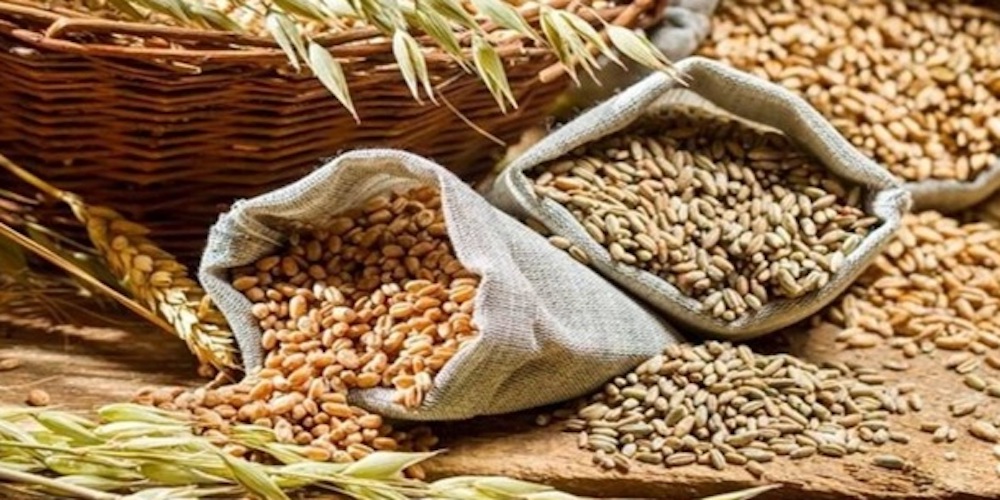Towards Food Self-Sufficiency

The Modi government has set national targets for total food grains production set at 3320 lakh tonnes for the year 2023-24. Target for production of pulses have been fixed at 292.5 lakh tonnes compared to 278.1 lakh tonnes this year and oilseeds production will be increased from 400 to 440 lakh tonnes in 2023-24.
Giving the above information at a recent event in the national capital, Union Agriculture Minister, Shri Narendra Singh Tomar, said that the total “Shree Anna production has to be increased from 159.1 lakh tonnes in 2022-23 to 170.0 lakh tonnes in 2023-24. The strategy would be to increase area through inter-cropping and crop diversification and productivity enhancement through introduction of HYVs and adoption of suitable agronomic practices in low yielding regions”.
He emphasized that agriculture remains the prime pulse of the Indian economy and is at the core of the socio-economic development of the country. It accounts for around 19 per cent of the GDP and about two-thirds of the population is dependent on the sector.
It may be noted that India’s agriculture sector has been witnessing robust growth with an average annual growth rate of 4.6 per cent over the last six years. This has enabled the agriculture and allied activities sector to contribute significantly towards the country’s overall growth, development and food security.
As per 2nd Advance Estimates (2022-23), production of foodgrains in the country is estimated at 3235 lakh tonnes which is higher by 79 lakh tonnes than the production of foodgrains during 2021-22. Record production is estimated of rice, maize, gram, pulses, rapeseed and mustard, oilseeds and sugarcane.
Total production of sugarcane in the country during 2022-23 is estimated at record 4688 lakh tonnes which is higher by 1553 lakh tonnes than the average sugarcane production.
As per the 3rd Advance Estimates of Horticulture, a record 3423.3 lakh tonnes of horticultural production are estimated in 2021-22 which is 77.30 lakh tonnes higher over production of 2020-21.
The priority of the government is agro-ecological based crop planning for diversion of land from excess commodities like rice and wheat to deficit commodities like oilseeds and pulses and high value export earning crops.
Accordingly, “Special Mustard programme” was initiated during rabi 2020-21 that has brought most spectacular results. Mustard production has jumped by 40% from 91.24 to 128.18 lakh tonnes in the last 3 years. The productivity saw an 11% increase from 1331 to 1447 kg/ha. The area under rapeseed & mustard enhanced by 29% from 68.56 lakh ha in 2019-20 to 88.58 lakh ha in 2022-23. Timely action by the central and state governments made this remarkable achievement possible.
Minister Tomar shared that India organized The Global Millets (Shree Anna) Conference at IARI campus, PUSA, New Delhi on 18th of March 2023 as part of a major celebration of the International Year of Millets. Dedicating to the International Year of Millets (IYM) 2023, the Hon’ble Prime Minister unveiled commemorative coin and stamp celebrating IYM followed by digital launch of a book of millets (Shree Anna) standards.
The Prime Minister declared ICAR-IIMR as Global Centre of Excellence which was followed by screening of a short film on Shree Anna & IYM 2023. The Ministry of Agriculture and Farmers Welfare is ensuring that IYM is celebrated in a structured way throughout the year by organizing regular meetings (In person/ video conferencing) with all the stakeholders. Expert Institutes such as ICAR-IIMR, APEDA, ICRISAT and others are also involved to encourage R&D, productivity and value addition.
According to Sh. Kailash Choudhary, MoS (Agriculture and Farmers Welfare), global demand for millets is set to rise, consequent to the celebration of the year 2023 as the International Year of Millets (IYM). Due to its multi-functionality, millets hold considerable potential to contribute to economic and ecological diversification, climate resilience, and food & nutritional security.
Widely recognized as “Smart Food” or “Nutri-Cereals”, millets play a crucial role in transforming agri-food systems, across the globe. India is set to become an International Hub for millets.
Be that as it may, overall the country is maintaining an increasing trend in food grain production since 2015-16. The government has taken measures to augment crop and livestock productivity, ensure certainty of returns to the farmers through price support (Minimum Support Price), promote crop diversification and has made focused interventions to enhance credit availability, facilitate mechanization and boost horticulture and organic farming.
As a result, agriculture exports touched a historic high growth in 2021-22. As compared to previous year 2020-21, the agri and allied export has increased from 41.86 billion USD in 2020-21 to 50.24 billion USD in 2021-22 i.e. an increase of 19.99%, says Shri Manoj Ahuja, Secretary (Agriculture & Farmers Welfare).
For modernization of agriculture and facilitate farmer, government launched the SATHI (Seed Traceability, Authentication and Holistic Inventory) Portal and Mobile App, a Centralized Online System for seed traceability, authentication and inventory designed to deal with the challenges of seed production, quality seed identification and seed certification. This has really helped, says Ahuja.
Further he stated that to combat the adverse weather conditions the single window advisory system should be adopted for issuing the weather-related issues to the farmers. For the improvement of the soil health card system this year a new initiative will be in place for which agriculture graduates will be given an opportunity to work on implementation of SHC.
According to Arun Baroka Secretary (Fertilizers), there will be assured timely supply of fertilizers for forthcoming kharif season. The government has already announced plans to convert more than 3.25 lakh fertilizer shops across the country as Pradhan Mantri Kisan Samruddhi Kendras. These will be centres where farmers can buy not only fertilizers and seeds but also implement soil testing and avail useful information about farming techniques.
It may be noted that there is an Integrated fertilizer management system (IFMS) for detailed information about the fertilizer and related issues.



